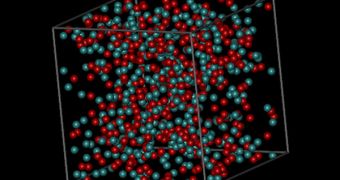Researchers at the Rensselaer Polytechnic Institute (RPI) discovered in a new study that the collective swimming behavior of microorganisms including the ulcer-causing bacteria H. pylori is severely disrupted when polymers like those found in human mucus and saliva are thrown in their paths.
In a perfect environment, these bacteria are capable of synchronizing their motions to an amazing degree, providing a real spectacle for researchers watching them through microscopes. Each of the individual bacterium causes its own waves as it swims.
One of the most interesting environmental adaptations that scientists discovered was seeing how these organisms modified their motions and behavior in order to compensate for the waves produced by other microorganisms swimming alongside them.
The picture that emerges is that of a complex, coordinated group behavior. Bu the RPI team suggests that this behavior may be impeded by the presence of human mucus and saliva. If that turns out to be the case, then this would provide an additional reason for the emergence of these mixtures.
In the recent study, the team added several polymers usually found in saliva and mucus in a clear solution where h. Pylori swam. Immediately, the bacteria started having difficulties when it came to coordinating their motions through the new mixture.
From an evolutionary perspective, the fact that several bodily fluids evolved in order to make it very difficult for bacteria to mount a coordinated attack against the body makes perfect sense; even more so if we consider that saliva and mucus can mostly be found in the mouth and nose.
These are both important gateways into the human body, which numerous pathogens seek to take advantage of. “In the human body, microorganisms are always moving around in mucus, saliva, and other systems that exhibit elasticity due to the presence of polymers,” Patrick T. Underhill explains.
“Our study is among the first to look at how this elasticity impacts the collective behavior of microorganisms like H. pylori,” adds the expert, who holds an appointment as an assistant professor at the RPI Howard P. Isermann Department of Chemical and Biological Engineering.
“What we found is that polymers do in fact have a substantial impact on the flows created by the swimming bacteria, which in turn makes it more difficult for the individual bacteria to coordinate with each other. This opens the door to new ways of looking at our immune system,” he says.
Details of the work appear in a paper published in a recent issue of the scientific journal Physical Review E, and entitled “Effect of viscoelasticity on the collective behavior of swimming microorganisms.”
[YOUTUBE=http://www.youtube.com/user/rpirensselaer?v=Yvc_3xncpME]

 14 DAY TRIAL //
14 DAY TRIAL //